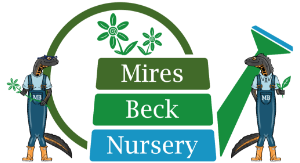Pinus sylvestris (Scots Pine)
Other Names: Riga Pine, Baltic Pine, Norway Pine, Mongolian Pine, Scot Fir
Description: Grown abundantly in its Caledonian heartland but now spread throughout Britain this slow growing evergreen trees is grown primarily for timber production and is often found on heaths and bogs. Mature trees have relatively short paired needles (two growing from the same point).The canopy of this species is often flat topped, as apposed to the more common triangular shape of most conifers. The bark on the lower trunk is scaley and dark brown-grey while on the upper trunk it is more of a flaky orange-brown.
Uses: The Scots Pine is an important tree in commercial forestry where the wood is used for pulping or making timber products.
Conservation Value: Like most conifers, this species is not as valuable to conservation as most broadleaf species. It can offer year round cover in woodlands and it seeds are eaten by birds and small mammals.
Preferred Locations: This species favours stony and sandy soils which are generally well drained. Full sun locations are ideal to speed its growth.
Size: Can grow up to 35m in height and have up to a 3m canopy spread.
Time to reach full height: 20 to 50 years.
Lifespan: Commercially felled usually between 50 and 120 years with an average lifespan of between 150 and 300 years.
Prunus avium (Wild Cherry)
Other Names: Sweet Cherry, Gean
Description: This small to medium sized tree is often found on the margins of deciduous woodlands and in hedgerows and is often planted in parks and gardens. The bark is reddish-brown, smoot and shiny when young but peels when older to create characteristic horizontal lines. Produces blossom in between March and May with cherries produces in mid to late summer.
Uses: In modern times the wood of the Wild Cherry, which is strong and honey coloured, is used for veneers for furniture. In the past cask loops and vine poles were made from the wood and it was actively cultivated for fruit production, less so now.
Conservation Value: The early spring flowers provide a much needed early source of nectar for bees after a hard winter. The cherries are eaten by many birds including the song thrust and the blackbird but many mammals also make use of this plentiful bounty including badgers, yellow necked mouse, wood mouse and dormice. The leaves are a staple food source for many species of moth.
Preferred Locations: Chalk, clay, sand or loam soils which are moist but well drained. The tree prefers a full sun location to grow.
Size: Mature trees can grow up to 30m but more often from 15m to 25m and has a canopy spread of around 8m.
Time to reach full height: 20 to 50 years.
Lifespan: Relatively short at around 60 years.

